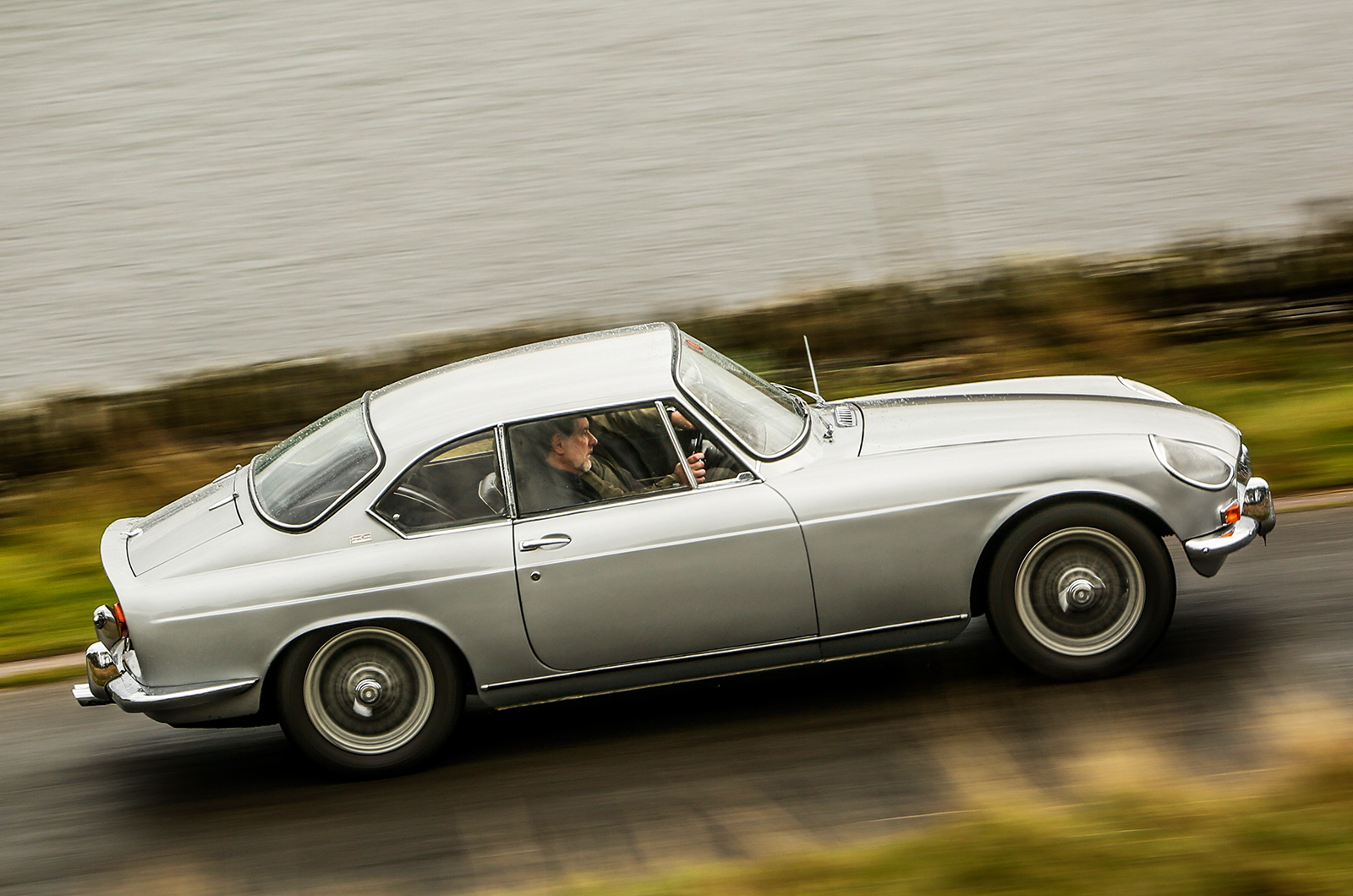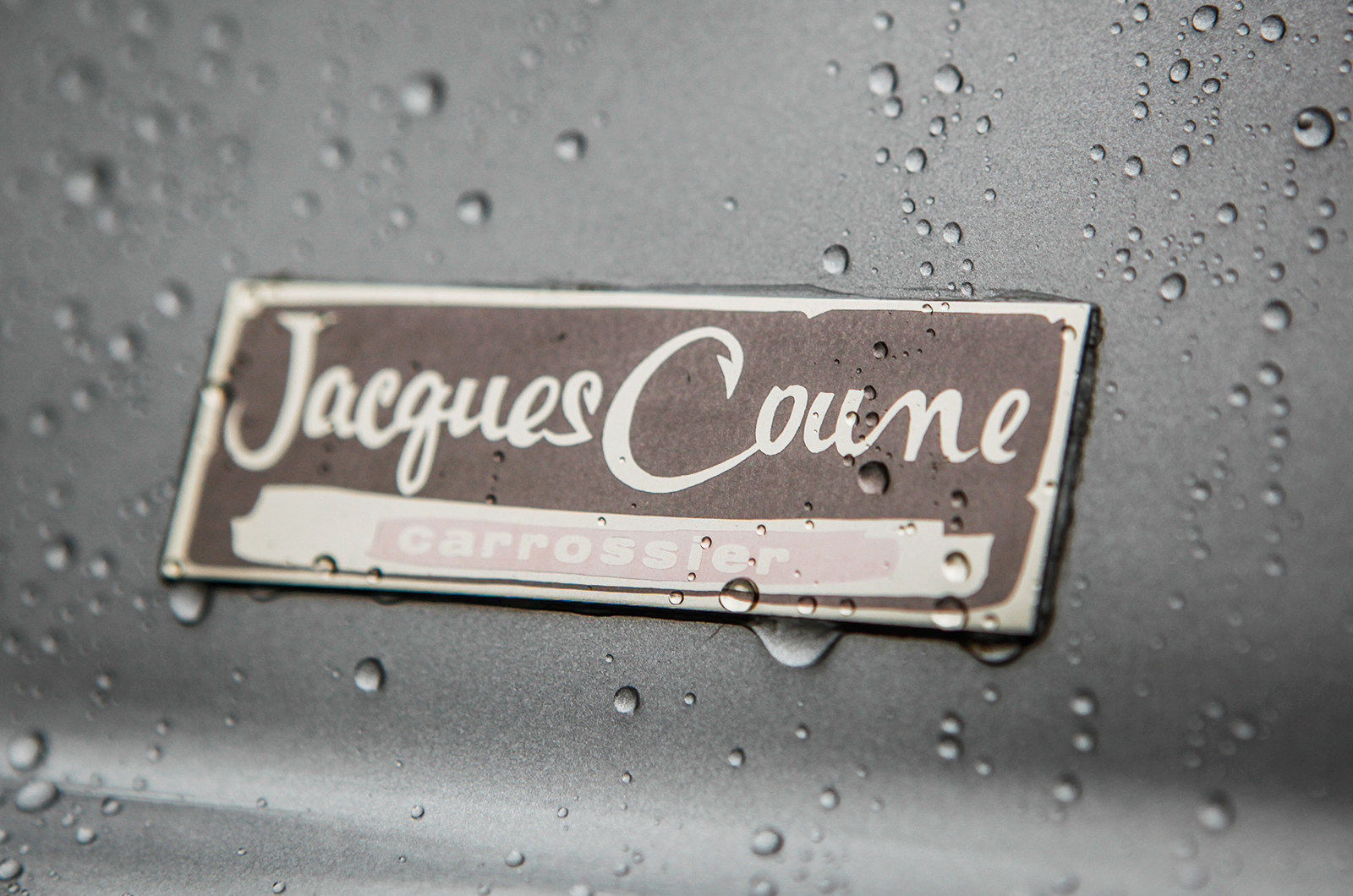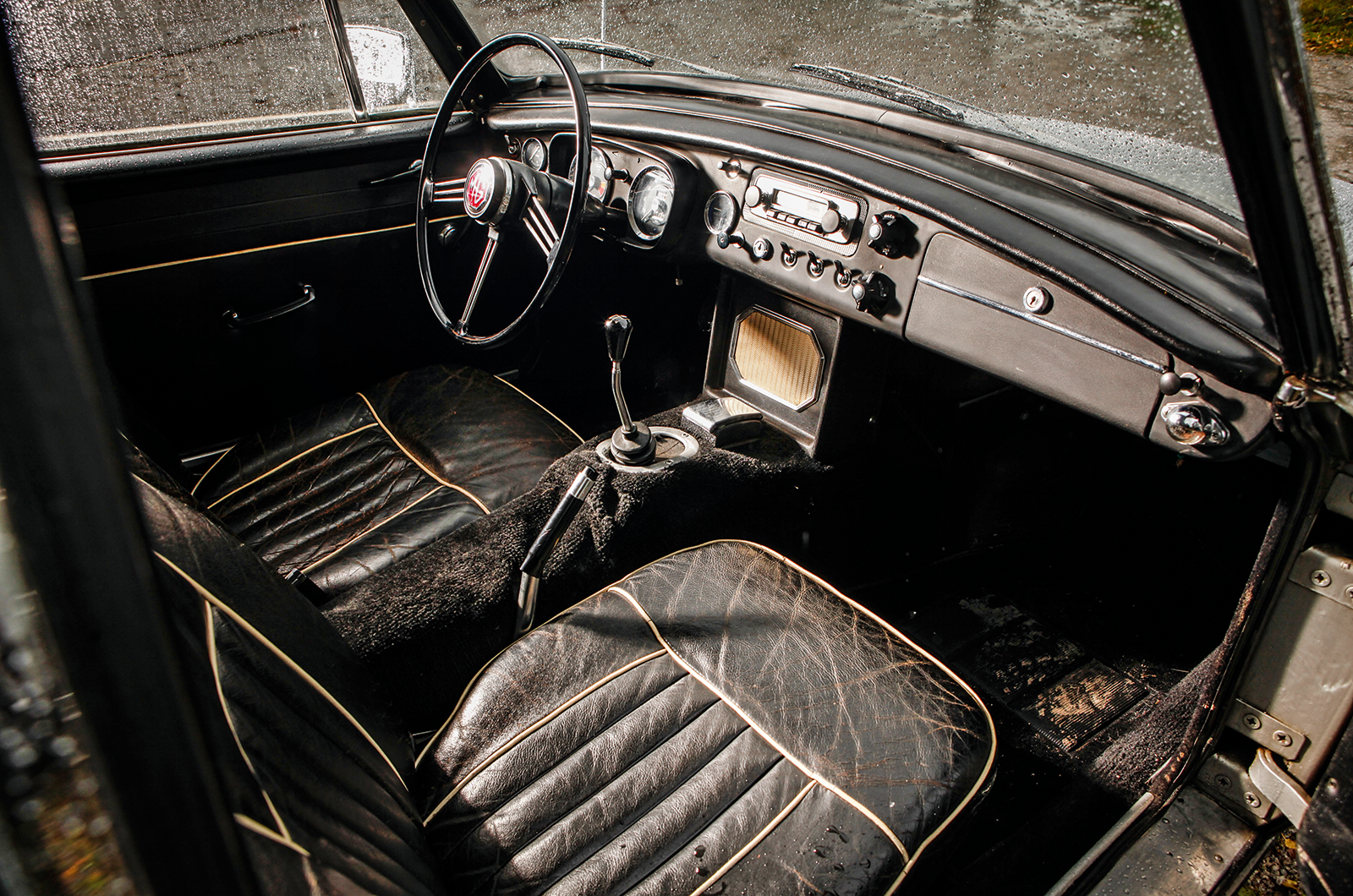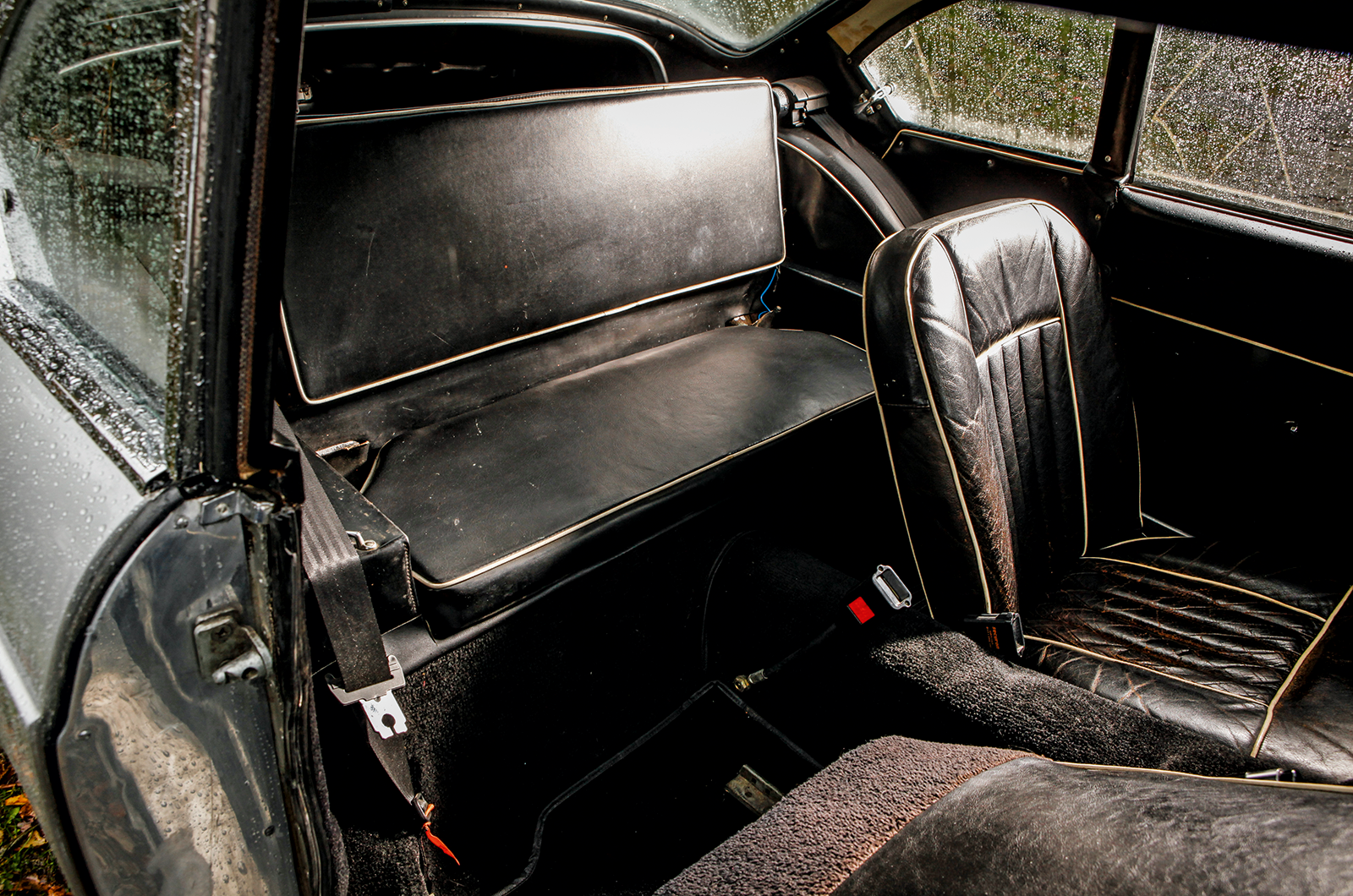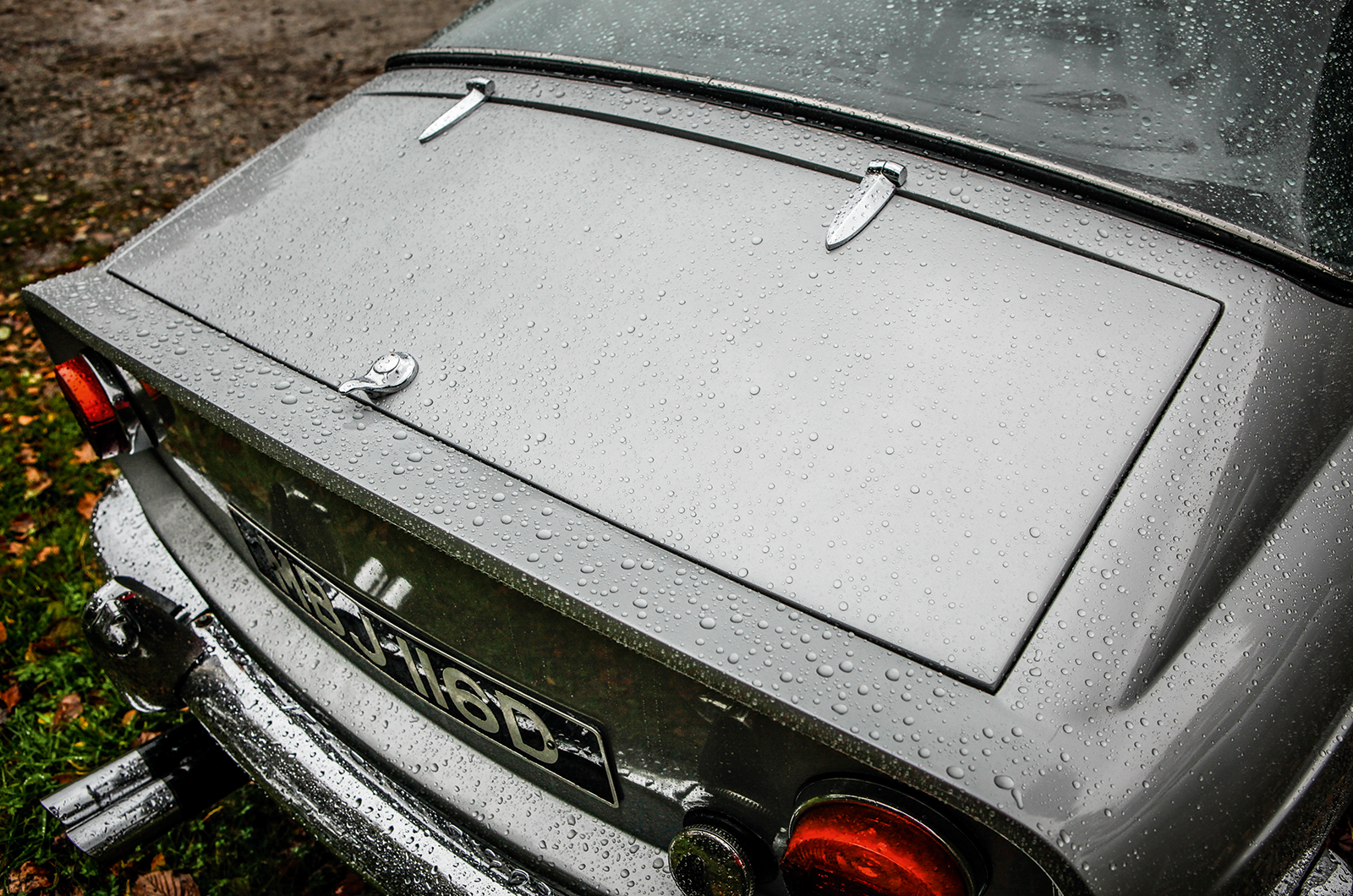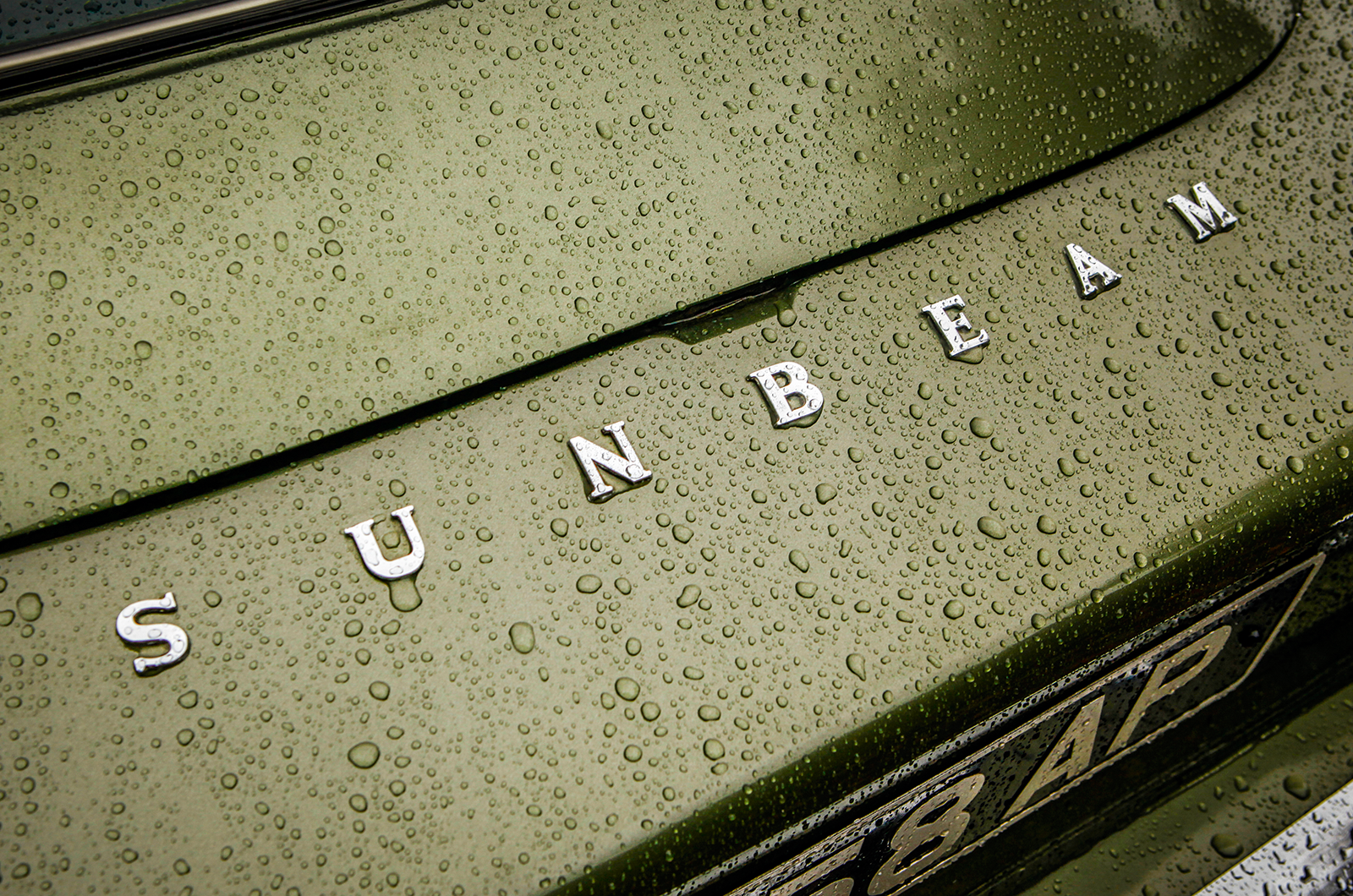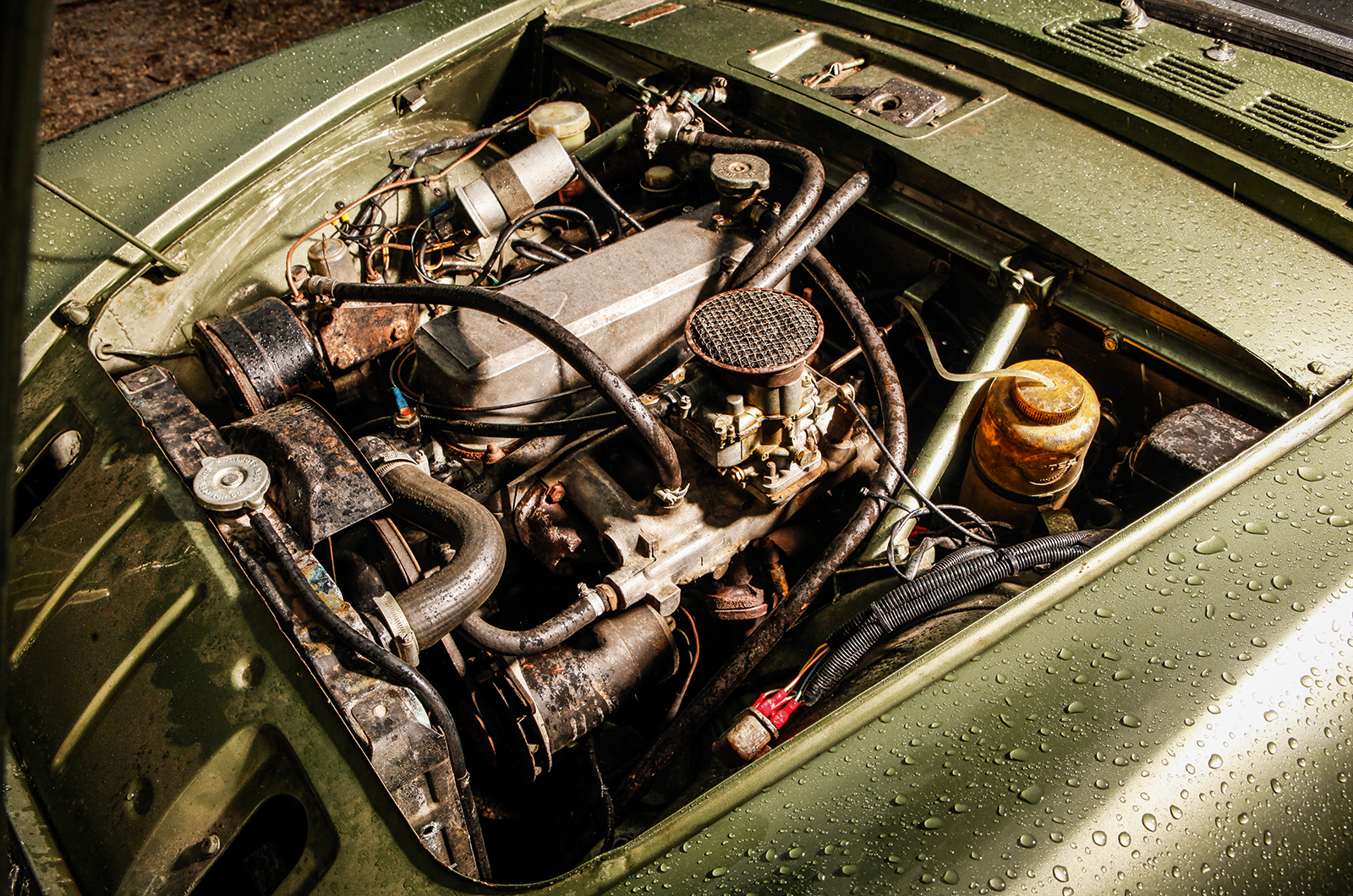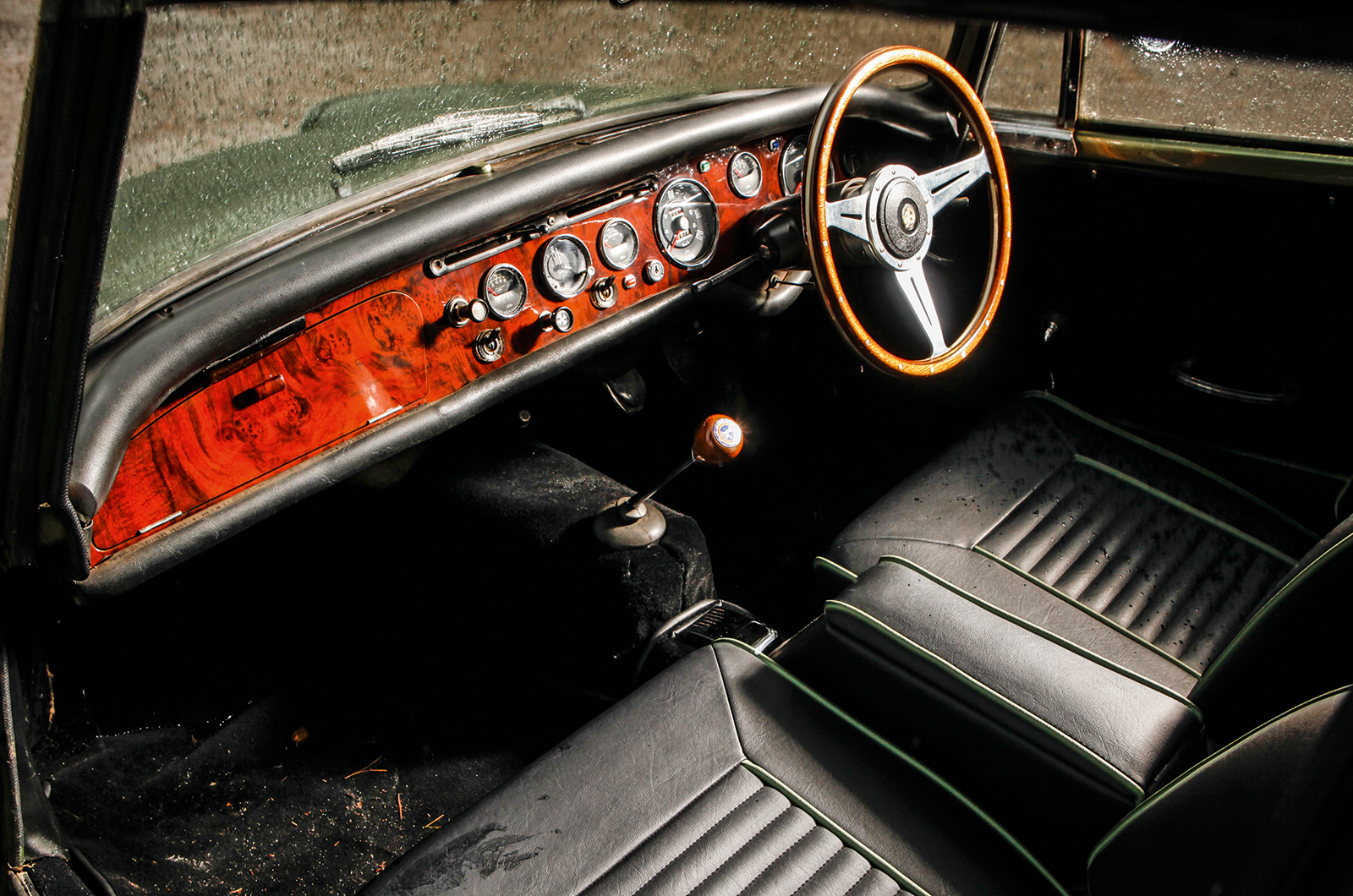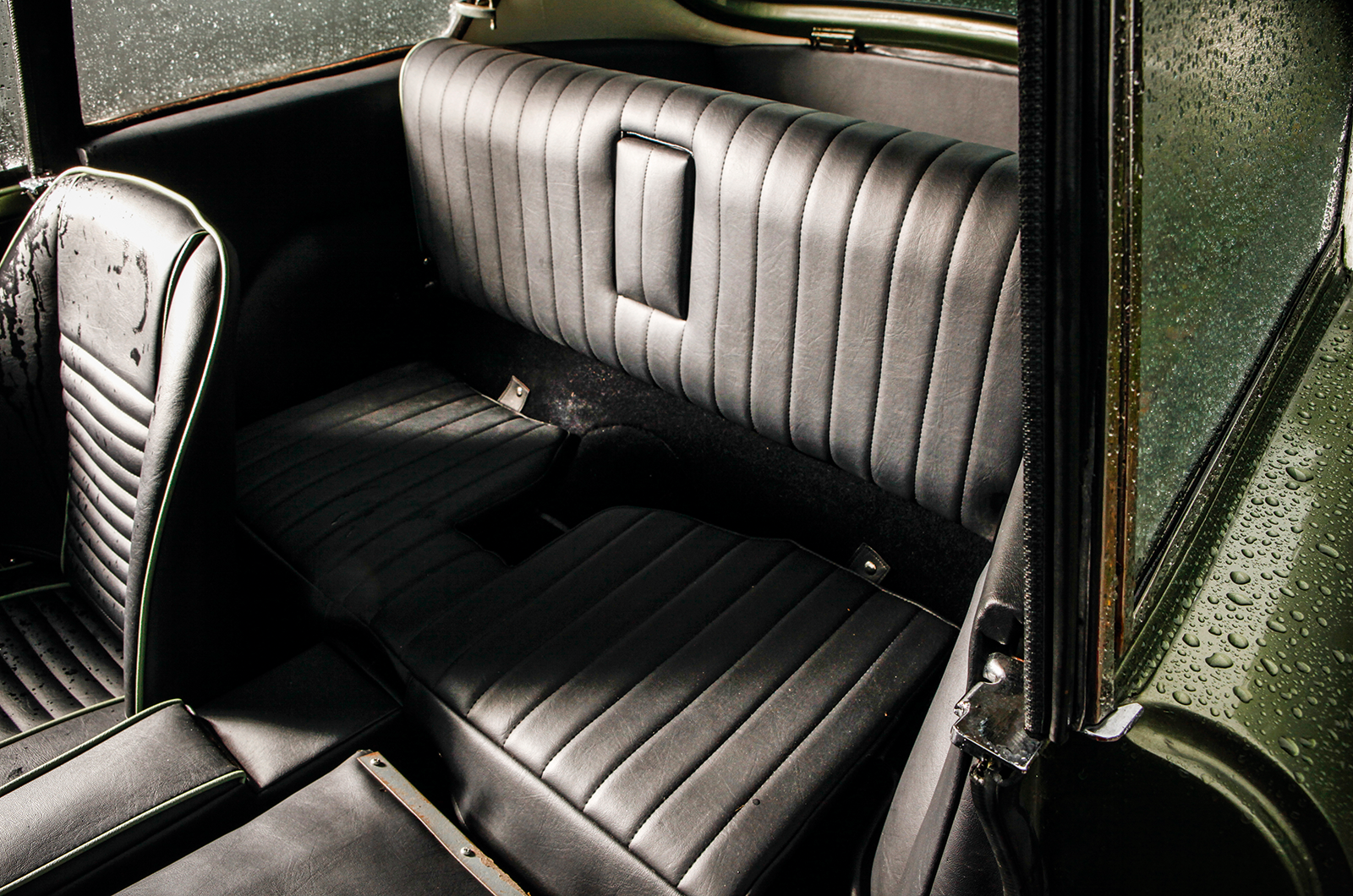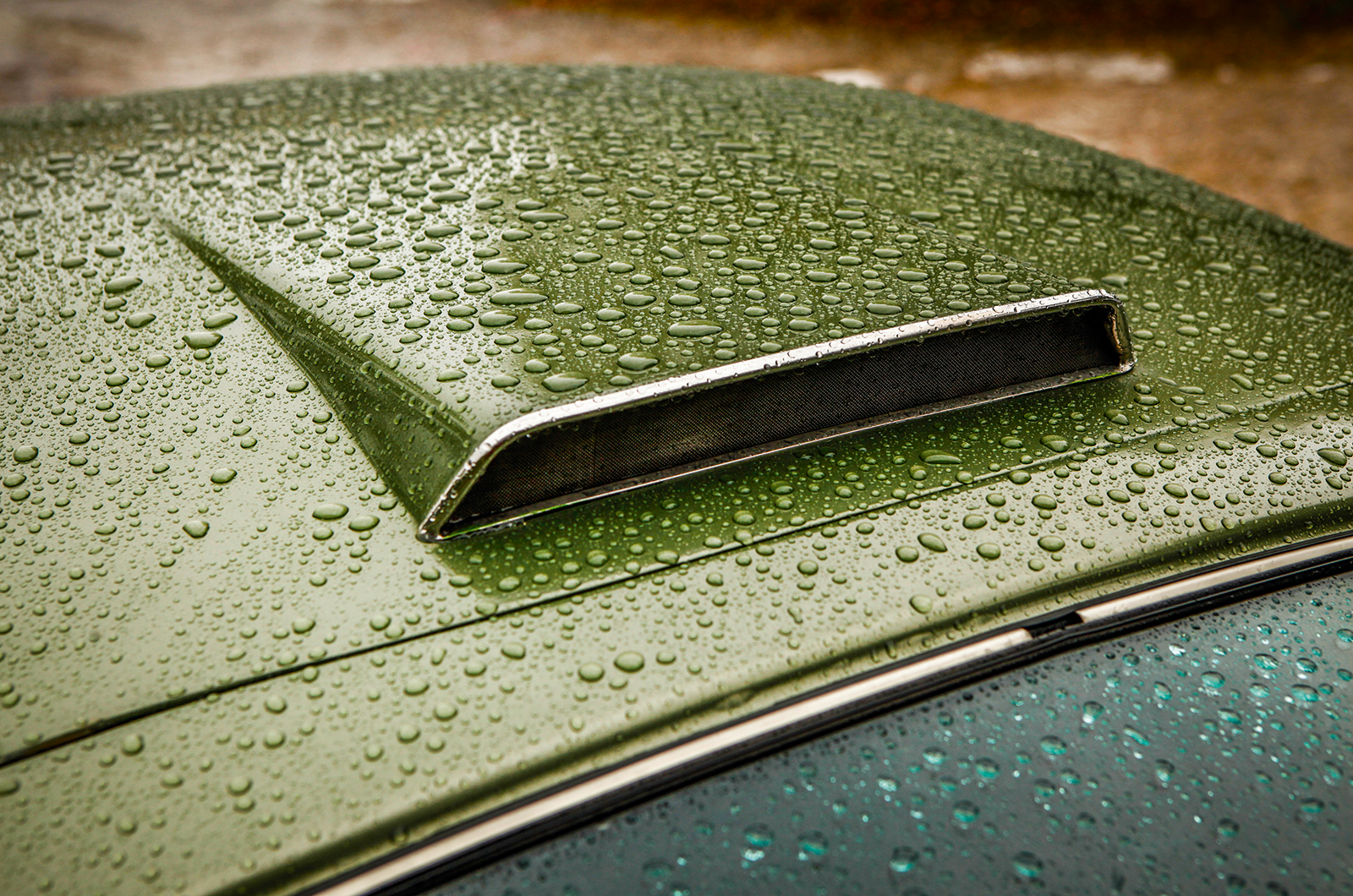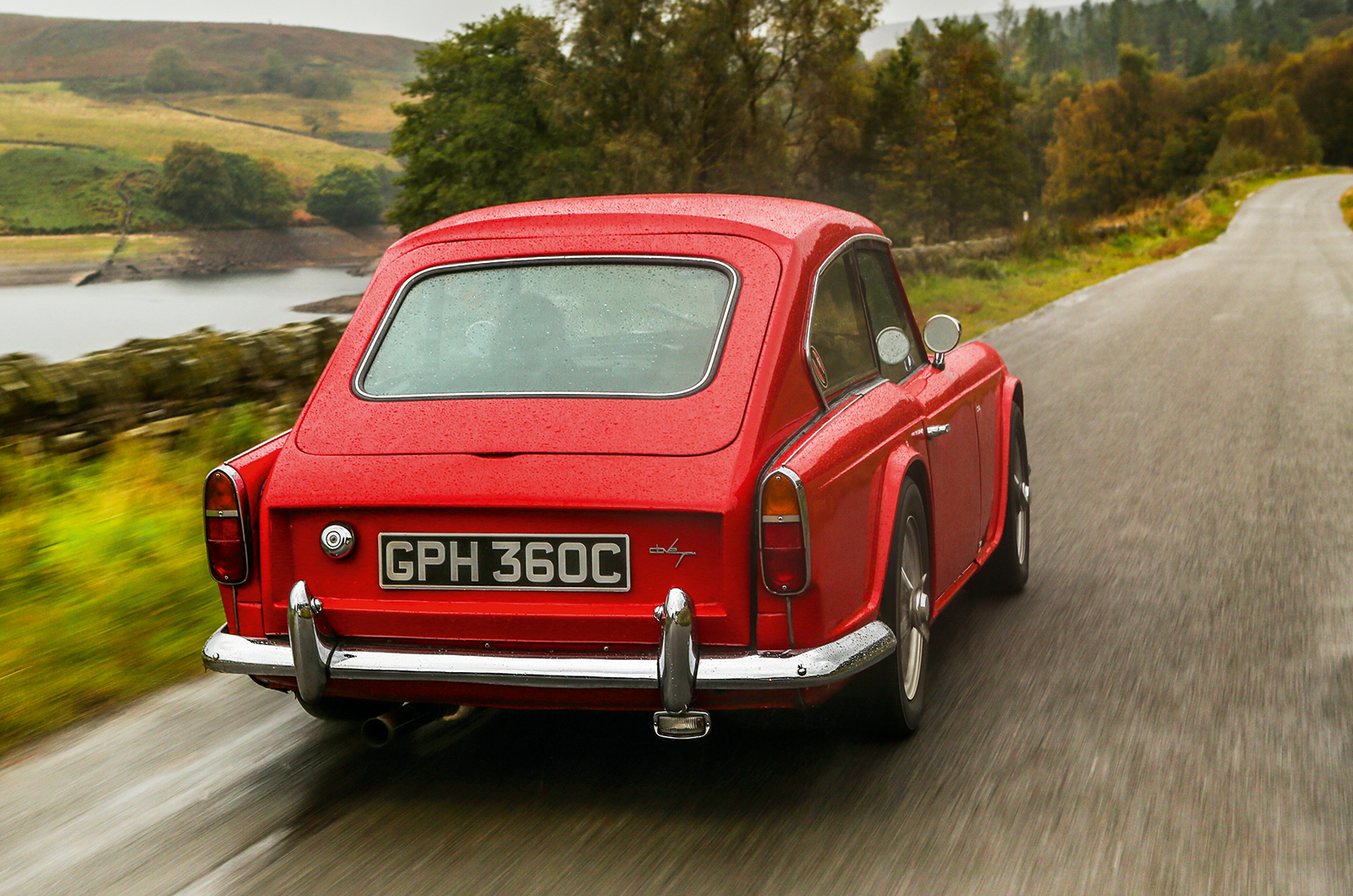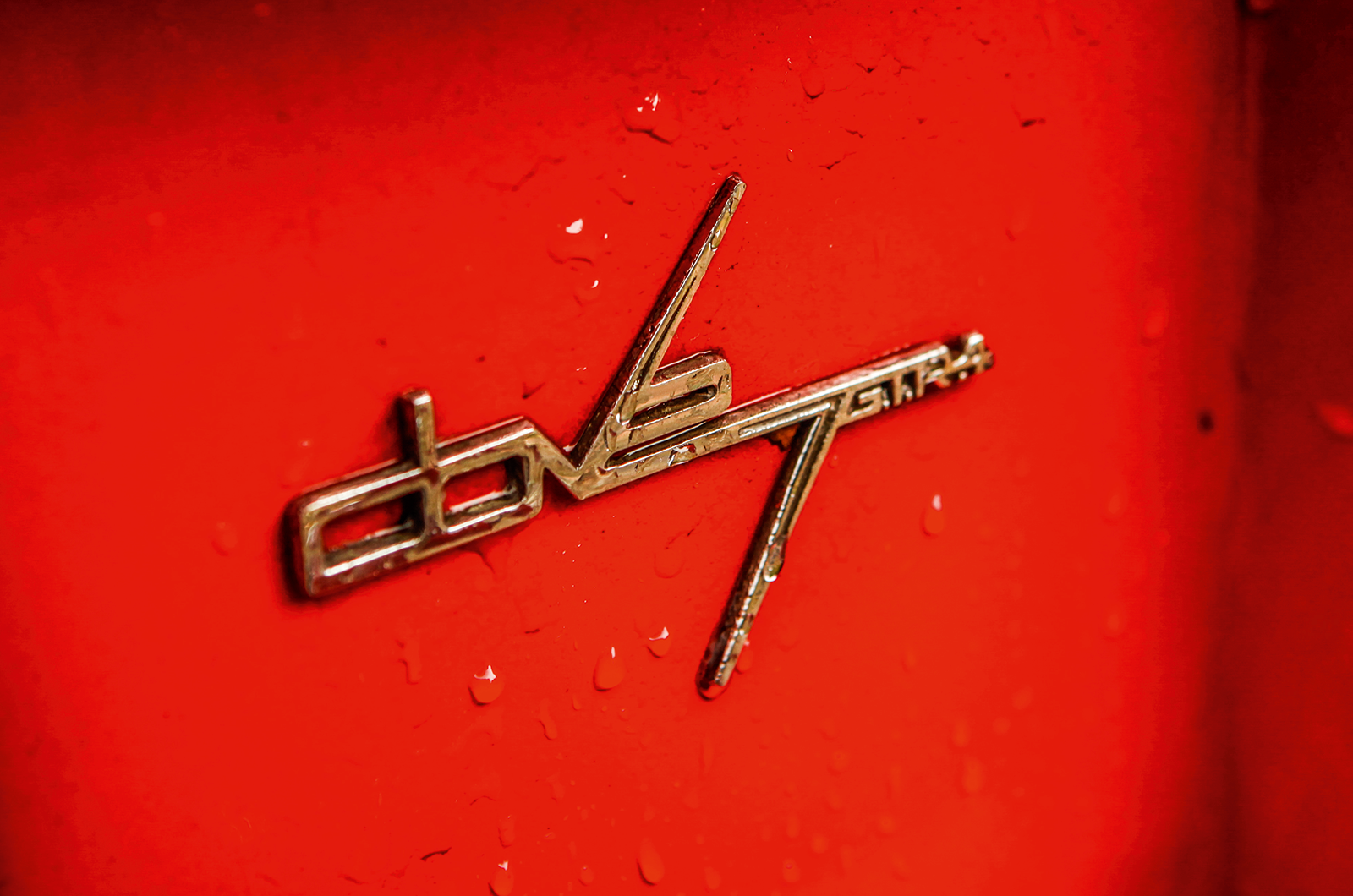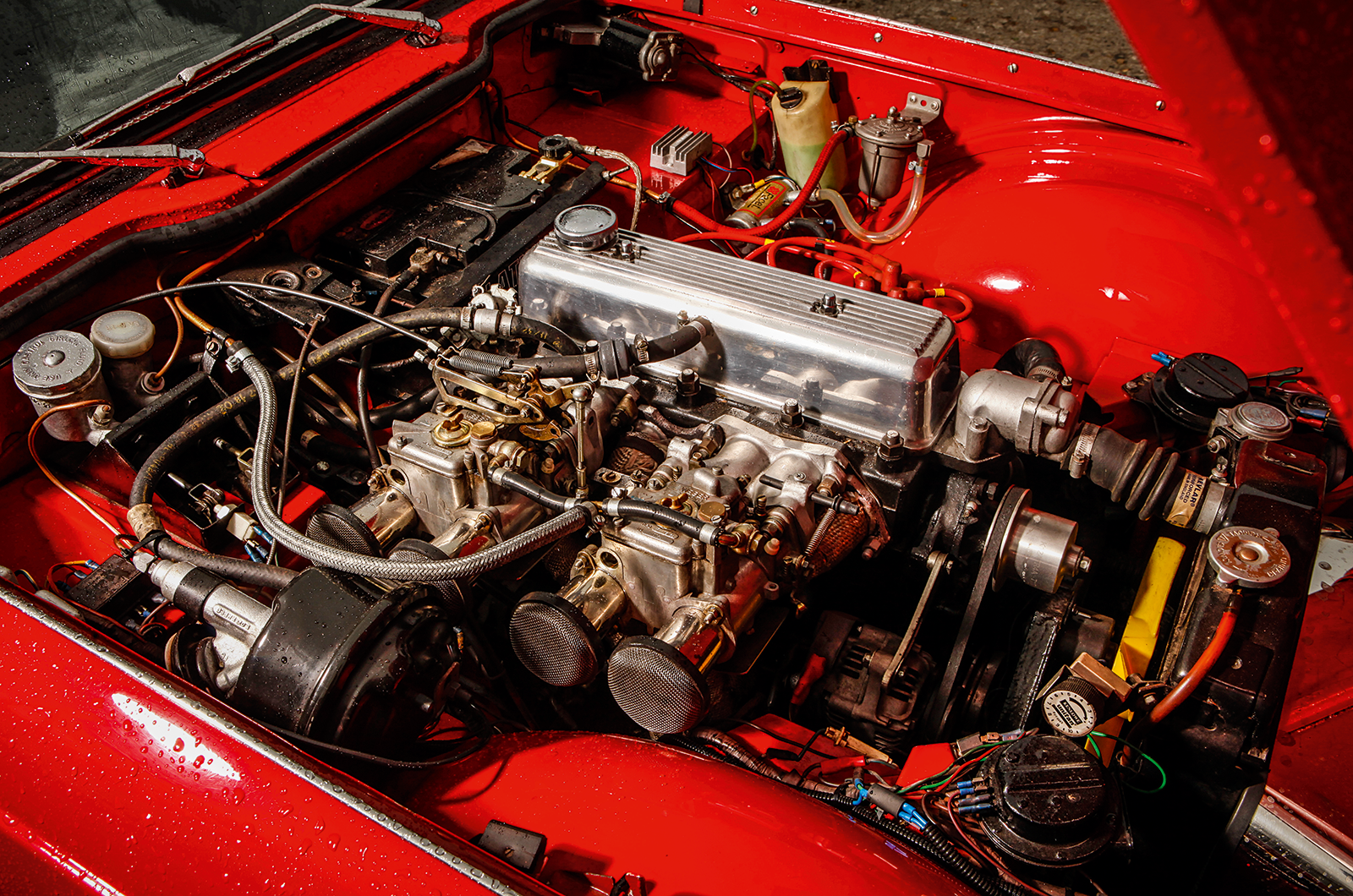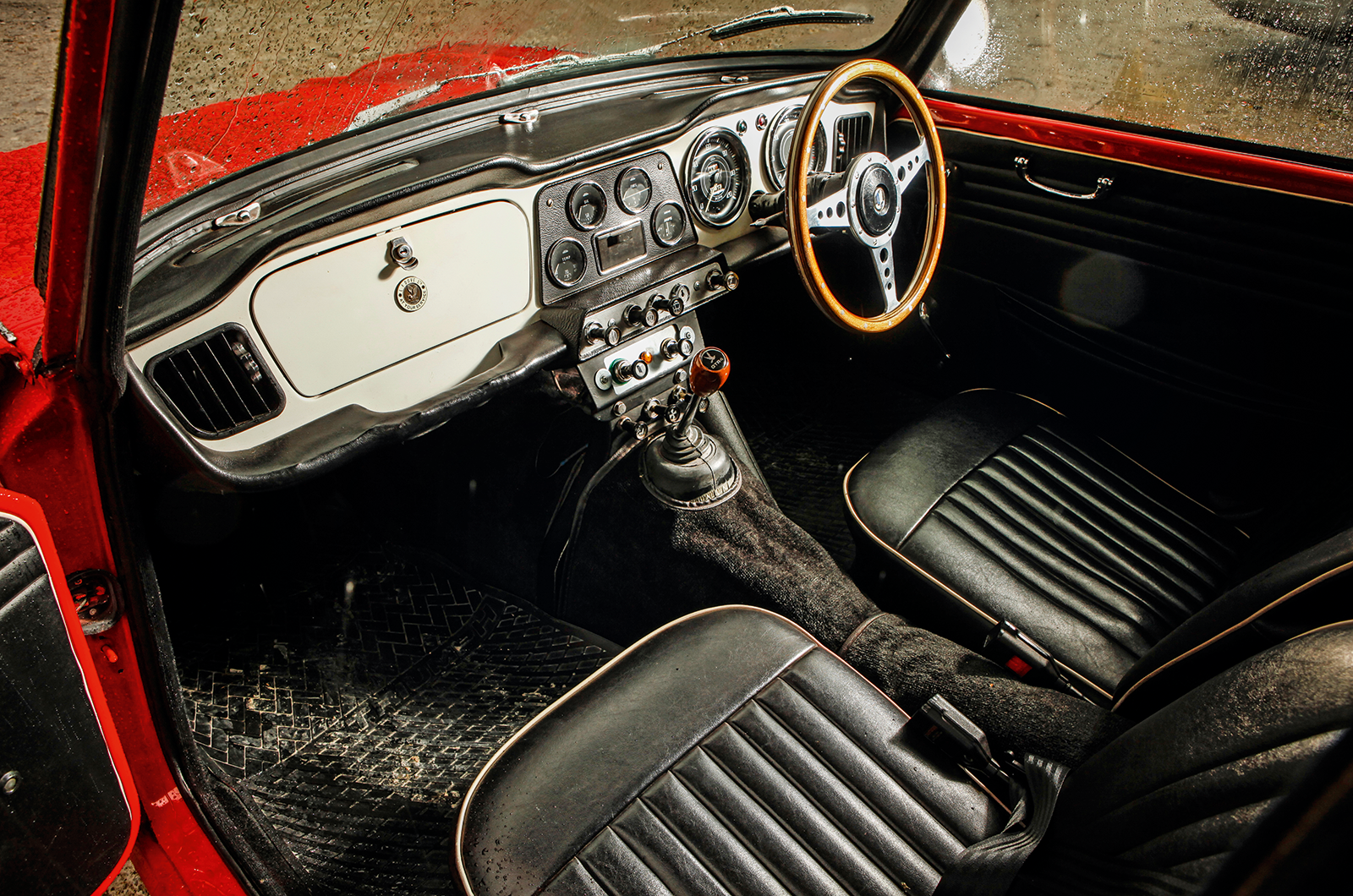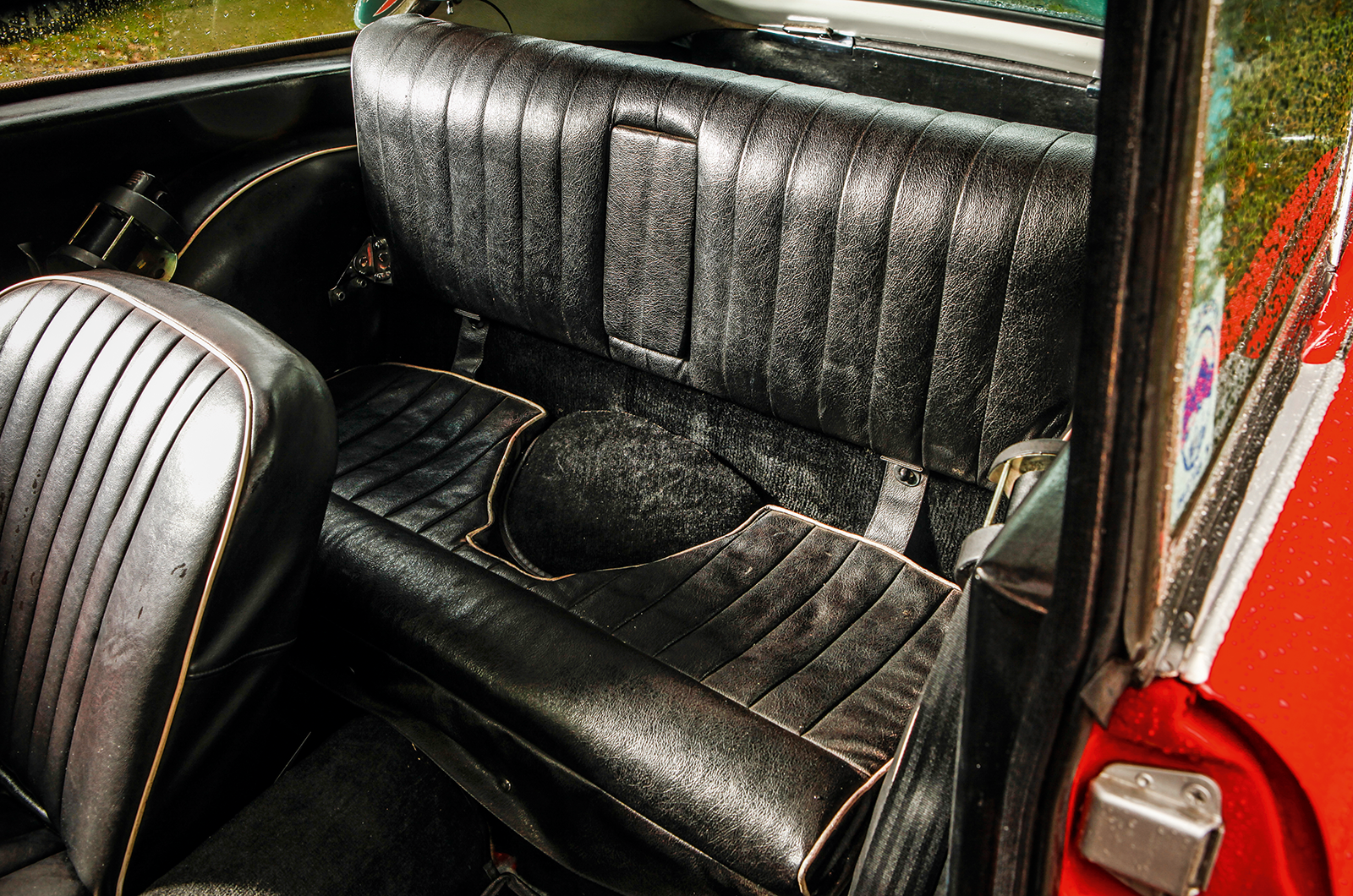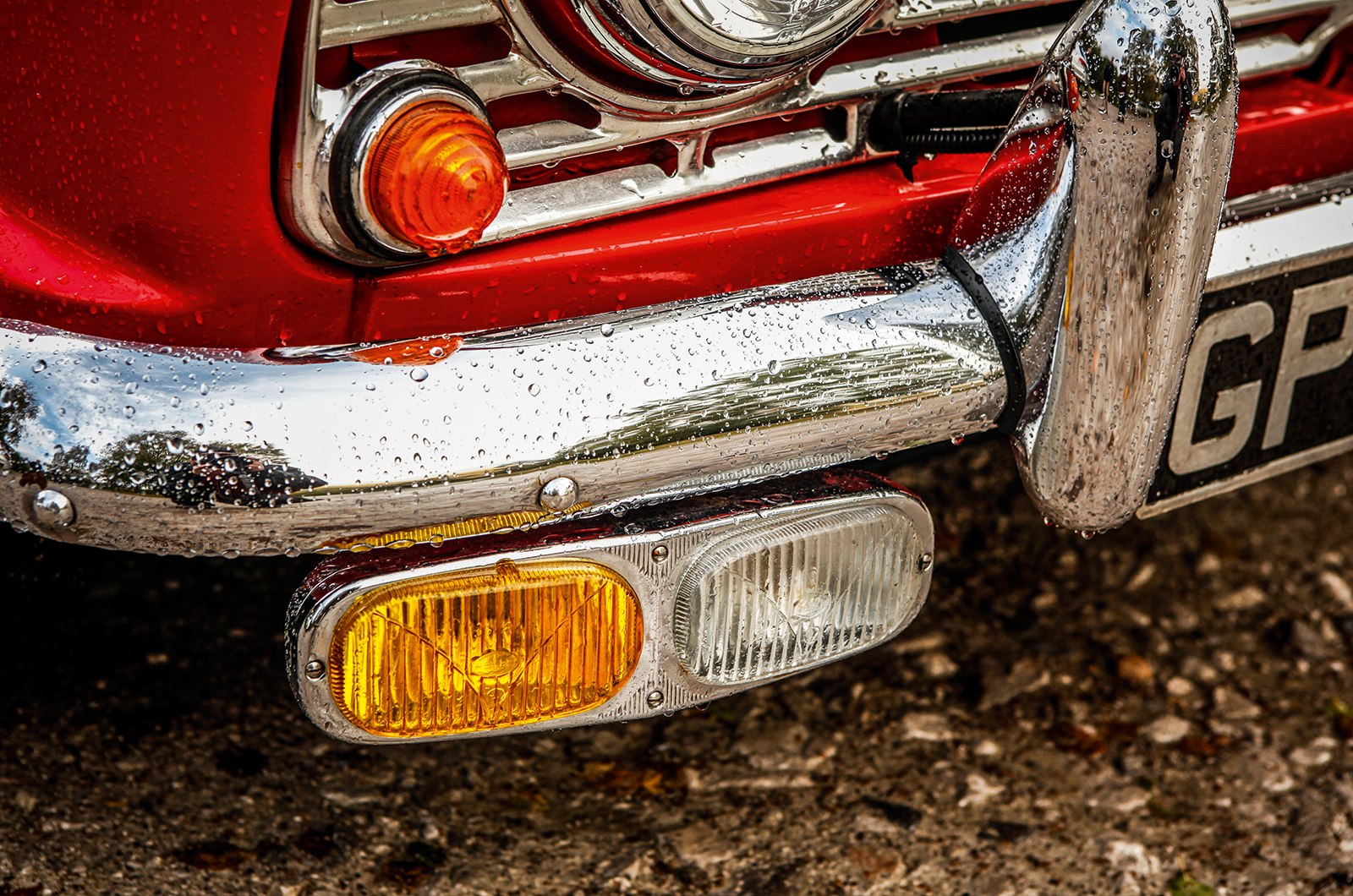Yes, it is 126lb lighter than a B roadster, never mind a GT, and it has a lower centre of gravity than the Abingdon tintop – but the steering is heavy and rather numb.
The problem is that Paul DiNicoli’s wonderfully original early MGB is wearing radial tyres on bias-ply steering geometry – and it predates an OE-fit front anti-roll bar.
The Triumph Dové GTR4’s hardtop is the least elegant, with a more obviously raised roofline
Given the wetness, speeds are more Driving Miss Daisy than Death Race 2000, but summon your inner superhero and the MG does corner neutrally with monosyllabic feedback.
The Sunbeam’s lighter steering and front anti-roll bar make it far easier to wield through corners and over shimmying roads.
Lock to lock, its Burman recirculating-ball mechanism proves far more consistent, tauter and quicker than a box has any right to be.
Lacking straight-ahead gormlessness and general shilly-shallying, only the faintest degree of fuzziness makes it discernible from a rack and pinion set-up.
Compared with the MG, the Sunbeam’s parpsome 1592cc ‘four’ is down on output (86bhp vs 95bhp; 94lb ft vs 110lb ft), performance and the tone/volume of its growling timbre, which is given a helping hand on the Berlinette by a twin-tailpipe exhaust (as per the Abarth system that Coune fitted as its Belgian agent).
The Triumph Dové GTR4’s badge emphasises the accent
The MG also has the best, most polished ride of the trio, but the Harrington isn’t far behind.
This, though, is not enough to counter the Alpine’s sheer ease of use, its lighter controls – exemplified by its slick gearchange – and nimbler feel, which help the Rootes sportster ease ahead to a moral victory.
While both the MG and Sunbeam could be enhanced by factory-backed tuning goodies, the Triumph is the only car suitably tweaked – and boy, does it show.
A GTR4 included engine balancing and a gas-flowed head for £35 by Jack Brabham Motors, SAH Accessories or Laystall Engineering.
It is believed, in fact, that no cars were built with standard TR4 engines, helping to counter the GTR4’s 400lb weight penalty over its open sibling.
The Triumph Dové GTR4’s uprated engine makes 120bhp
This car, meanwhile, also benefits from a rollcage, upgraded suspension (including period TriumphTune front anti-roll bar), and a spicy modern-built 2138cc race-cam engine stoked by twin Weber 45DCOEs.
When testing the GTR4 in period, Sports Car Graphic commented that: ‘There seems a definite need to insist on competition-specification dampers when ordering a TR4 with the 2+2 body.
‘The effect of the too-soft front end is curious, setting up an odd twisting motion over uneven surfaces and producing a ‘jelly-like’ effect at the wheel.’
Today, with it sporting the aforementioned mods, these remarks no longer apply to this impressive GTR4, which is one of c25 left.
It is the best drive here, building on the TR4’s light, positive steering to make it a fast, athletic and quick-witted GT.
The Triumph Dové GTR4’s modified dashboard groups lots of gauges in front of the driver
Gone is the standard TR4 unit’s asthmatic and almost lackadaisical rev range, jabbering jack-hammer soundtrack and so-so output (100bhp and 127lb ft).
Where the MG and Sunbeam feel happy surfing around on obliging peak torque, in the vicinity of 3000rpm, at such engine speeds this GTR4’s 150bhp ‘four’ is still doing its stretching exercises.
Keep your foot in. The angry guttural noise and sizzling performance are self-multiplying – the more you crave, the more you indulge.
Its honed stability and handling eradicate weather worries quicker than the flapping wipers swat away fat raindrops.
The TR4’s 11 secs 0-60mph time is chopped off at the knees by this 128mph GTR4’s 7.2 secs sprint, while this maniac unit yells its way up to 6000rpm.
The gearchange of the all-synchro ’box – a blend of short-throw MGB precision and the longer Sunbeam’s baby-oil smoothness – only serves to encourage your inner throttle demon.
The Triumph’s folding rear seat looks similar to the Sunbeam’s; the GTR4 was also built by Harrington
To the individual whose main consideration is appearance – and many are wooed by a GT’s low-slung provocative appeal – matters are not so clear-cut in the realms of visual appreciation.
The Harrington – one of nine survivors – is based on the oldest design.
It’s a captivating mini-me Ford Thunderbird with such rock ’n’ roll fins that they’re worthy of a supporting role in The Jetsons.
It’s a coherent, stylish and practical GT that is proud of its endurance-racer roots.
Not so the Anglo-Italian Triumph, the top of which looks like a tussle between the almost awkward and simple functionalism.
Although I could argue that the rising roofline and steeply raked hatch only add to the brawn of the TR4 shape, giving it a degree of no-nonsense bull-necked toughness.
Extra lamps on this coachbuilt Triumph
Look quickly and that stylised ‘Dové’ script could even be mistaken for a swallow tattoo.
Unless, of course – and I’m not sure if I’ve already mentioned this – the damp might have shorted my brain.
Debating gawkiness is something to which the graceful Continental sophistication of the Berlinette will not be subjected.
The MG is the most accomplished-looking of these conversions, as well as being the only true coupé present.
Bearing a resemblance to another far grander, but less exclusive 1964 GT alumnus – the Ferrari 275GTB – the MG differs with its straight run-through shoulder-line, pulled wheelarch lips, rear side windows and wraparound back screen.
Its taut prettiness manages to ensnare gesticulating aesthetes and, depending on how your eyes work and your inclination to annoy the tifosi, could even be regarded as a less flaccid, more robust piece of design altogether.
Images: Tony Baker
Thanks to: the owners; Wayne Scott, TR Register; John Watson, MG Car Club; David Bradley, Sunbeam Alpine Owners’ Club; Nicolas Lecompte
This was first in our March 2015 magazine; all information was correct at the date of original publication
Factfiles
MGB Berlinette
- Sold/number built 1964-’70/56
- Construction steel monocoque with steel, aluminium, GRP panels (first six all-steel)
- Engine all-iron, pushrod 1798cc ‘four’, twin SU carburettors
- Max power 95bhp @ 5400rpm
- Max torque 110lb ft @ 3000rpm
- Transmission three-synchro, four-speed manual with optional overdrive, RWD
- Suspension: front independent, coil springs, lower wishbones rear semi-elliptic leaf springs; lever-arm dampers f/r
- Steering rack and pinion
- Brakes discs front, drums rear
- Length 12ft (3658mm)
- Width 5ft (1524mm)
- Height 3ft 11¼in (1200mm)
- Wheelbase 7ft 7in (2311mm)
- Weight 1920lb (871kg)
- Mpg 28
- 0-60mph 12.1 secs
- Top speed 112mph
- Price new £1300
Triumph Dové GTR4
- Sold/number built 1963-’65/54
- Construction steel chassis, steel body with glassfibre panels
- Engine all-iron, pushrod 2138cc ‘four’, twin SU or Stromberg carburettors
- Max power 120bhp @ 4600rpm
- Max torque 130lb ft @ 3350rpm
- Transmission all-synchro, four-speed manual with optional overdrive, RWD
- Suspension: front independent, coil springs, double wishbones, telescopic dampers rear semi-elliptic leaf springs, lever-arm dampers
- Steering rack and pinion
- Brakes discs front, drums rear
- Length 12ft 9½in (3899mm)
- Width 4ft 9½in (1461mm)
- Height 4ft 4in (1321mm)
- Wheelbase 7ft 4in (2235mm)
- Weight 2680lb (1215kg)
- Mpg 28
- 0-60mph 10.9 secs
- Top speed 115mph
- Price new £1250
Sunbeam Harrington Alpine
- Sold/number built 1961-’64/392 (all Series)
- Construction steel monocoque with steel/glassfibre panels
- Engine iron-block, alloy-head, pushrod 1592cc ‘four’, twin Zenith carburettors
- Max power 86bhp @ 5200rpm
- Max torque 94lb ft @ 3800rpm
- Transmission three-synchro, four-speed manual with optional overdrive, RWD
- Suspension: front independent, coil springs, double wishbones, anti-roll bar rear semi-elliptic leaf springs; telescopic dampers f/r
- Steering recirculating ball
- Brakes discs front, drums rear
- Length 12ft 11in (3943mm)
- Width 5ft ½in (1537mm)
- Height 4ft 5in (1346mm)
- Wheelbase 7ft 2in (2184mm)
- Weight 2527lb (1146kg)
- Mpg 32
- 0-60mph 13.3 secs
- Top speed 103mph
- Price new £1494
Enjoy more of the world’s best classic car content every month when you subscribe to C&SC – get our latest deals here
READ MORE
Celebrating the cars and more of Thomas Harrington & Sons
Triumph TR2 vs Swallow Doretti: genetic engineering
Triumph Spitfire vs MGB vs Lotus Elan: a new dawn
Simon Charlesworth
Simon Charlesworth is a contributor to Classic & Sports Car

